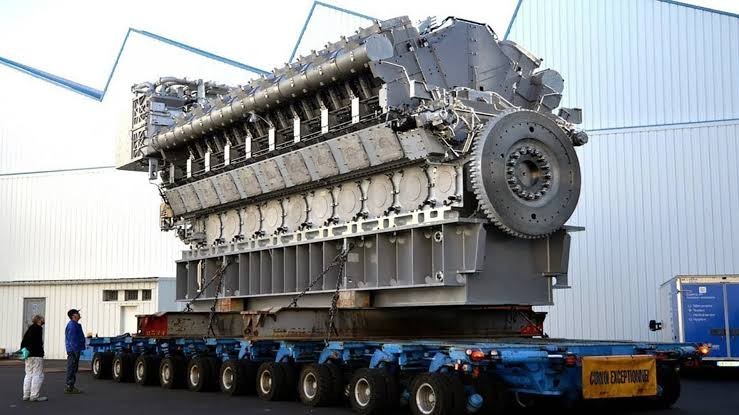Ship engines are the workhorses of the global economy, powering the massive vessels that transport goods around the world. In this article, we'll take a look at the biggest and most powerful ship engines ever built, and explore the engineering marvels that make them possible.
The shipping industry is a vital part of the global economy, transporting over 90% of the world's trade by volume. The massive ships that power this industry are powered by some of the most powerful engines in the world.
These engines are truly engineering marvels, capable of generating enough power to propel ships weighing millions of tons through the water at speeds of up to 25 knots. In this article, we'll take a look at some of the biggest and most powerful ship engines ever built, and explore the engineering marvels that make them possible.
The Wärtsilä-Sulzer RTA96-C:
The Wärtsilä-Sulzer RTA96-C is the largest and most powerful ship engine ever built. It is a two-stroke diesel engine with 14 cylinders, each with a bore of 96 centimeters and a stroke of 2.5 meters. The engine weighs over 2,300 tons and has a maximum output of 108,920 horsepower.
The RTA96-C is used to power some of the world's largest container ships and oil tankers. It is capable of propelling these massive vessels through the water at speeds of up to 25 knots.
The MAN B&W 12K98MC:
The MAN B&W 12K98MC is another massive ship engine that is used to power large container ships and oil tankers. It is a two-stroke diesel engine with 12 cylinders, each with a bore of 98 centimeters and a stroke of 2.5 meters. The engine weighs over 2,300 tons and has a maximum output of 109,000 horsepower.
The Wärtsilä-Sulzer RT-flex96C:
The Wärtsilä-Sulzer RT-flex96C is a slightly smaller version of the RTA96-C, but is still one of the largest and most powerful ship engines in the world. It is a two-stroke diesel engine with 12 cylinders, each with a bore of 96 centimeters and a stroke of 2.5 meters. The engine weighs over 2,000 tons and has a maximum output of 80,080 horsepower.
The RT-flex96C is used to power some of the world's largest container ships. It is capable of propelling these massive vessels through the water at speeds of up to 25 knots.
The MAN B&W 14K98MC:
The MAN B&W 14K98MC is a newer engine that was introduced in the early 2000s. It is a two-stroke diesel engine with 14 cylinders, each with a bore of 98 centimeters and a stroke of 2.5 meters. The engine weighs over 2,300 tons and has a maximum output of 108,920 horsepower.
The 14K98MC is used to power some of the world's largest container ships and oil tankers. It is capable of propelling these massive vessels through the water at speeds of up to 25 knots.
The Wärtsilä-Sulzer 14RTA96C:
The Wärtsilä-Sulzer 14RTA96C is another powerful engine used in large container ships and oil tankers. It is a two-stroke diesel engine with 14 cylinders, each with a bore of 96 centimeters and a stroke of 2.5 meters. The engine weighs over 2,000 tons and has a maximum output of 80,600 horsepower.
The 14RTA96C is capable of propelling these massive vessels through the water at speeds of up to 25 knots.
Conclusion:
The ship engines listed above are just a few examples of the biggest and most powerful engines ever built. These engines are truly engineering marvels, and they play a vital role in the global economy.
Additional Information:
- Ship engines are designed to be highly efficient and reliable. They need to be able to operate for long periods of time without requiring maintenance or repairs.
- Ship engines are also designed to be environmentally friendly. They produce very low emissions, which helps to reduce the impact of shipping on the environment.
- The engineering that goes into developing and building ship engines is truly impressive

Comments (0)
Please login to join the discussion
Be the first to comment on this article!
Share your thoughts and start the discussion